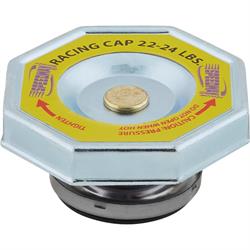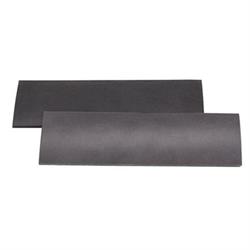Single Pass, Double Pass, Triple Pass Radiators; What’s The Difference?
What Does Your Radiator Do?
The job of a radiator is to remove as much heat from the hot engine coolant as possible. To accomplish this, the coolant is pumped from the engine to the radiator via your engine's water pump and radiator hoses. On a crossflow radiator the coolant cycles from the inlet side of the radiator to the outlet side of the radiator and back to the engine, where it must pass through the central radiator core. A downflow radiator has the inlet at the top and outlet back to the engine on the bottom. This core is made up of one or more rows of tubes that utilize cooling fins attached to them. These fins are used by the radiator's belt driven or electric cooling fan to direct air across these tubes, transferring the thermal energy from the coolant and the radiator tubes/cooling fins to the air around it.
Radiators have used many different materials and tube sizes/designs over the years. The important thing is to be able to have enough surface area and cooling capability for the thermal load of your engine.
Single pass radiators provide a flow of coolant through the radiator one time. Double pass radiators do it twice by looping the coolant path back to the inlet side of the tank. Triple pass radiators, you guessed it, they flow through the radiator three times. These radiators all utilize a crossflow style radiator design. To learn more about crossflow vs downflow radiator designs visit our Toolbox article explaining their differences. Since that is covered, we can move on to the cool stuff (pun intended).
What Do Single Pass Radiators Work Best For?
Single pass radiators have one channel that goes from inlet to outlet, hence "single pass." These work well in street applications, as well as some race applications. On these radiators, the inlet and outlet are usually located opposite of each other. The factory water pump on your vehicle should be adequate to move the coolant through a standard single pass radiator without issues.
How Does a Double Pass Radiator Work?
A double pass radiator will have the inlet and outlet on the same side. This is due to the fact that there are two channels coolant will flow through on its path back into the engine. These radiators will work well in both street and race applications; however, a high-volume water pump is a recommended upgrade. Since the inlet will be on the same side as the outlet, you may have to divert your upper or lower radiator hose depending upon application. You can accomplish this either with a pivoting water neck on Chevy engines, or by changing the hose entirely.
Where Would You Use a Triple Pass Radiator?
Triple pass radiators are more suited for race applications. Inlets and outlets will usually be on opposite sides and the flow will pass through three times. High volume water pumps, little to no restriction, and 1-to-1 pulleys are basically a requirement in order to ensure the optimal circulation and cooling effects of these high demand radiators.
Top any of these choices off with a solid fan shroud kit and a good puller type electric fan, and your engine will be running cool for years to come!
Related Articles
Shop for Radiators and Cooling System Components
Updated by Mark Houlahan







